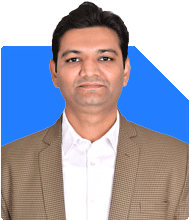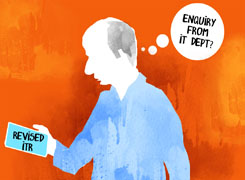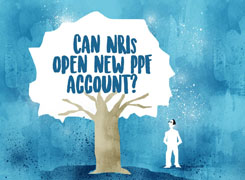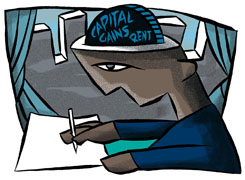Can I Retire at 49 with 6 Lakh/Month Income and 7 Cr+ Investments?
Ramalingam Kalirajan |8442 Answers |Ask -Follow
Mutual Funds, Financial Planning Expert - Answered on Aug 13, 2024
He has an MBA in finance from the University of Madras and is a certified financial planner.
He is the director and chief financial planner at Holistic Investment, a Chennai-based firm that offers financial planning and wealth management advice.... more

We are 49 years old couple with 6 lakh/month income from salary. We have 1 Cr in Share market, 15 lakh in mutual funds, 25 lakh gold bonds, 3 Cr in EPF, 2.25 Cr in FD/Secure Bonds and 15 lakh cash stcked in saving account for emergency use. Additionally, we also have Rs. 5 lakh/year of rental income. We have two school going kids (7th and 4th grade) and their combined fee is Rs. 7 lakh/year; apart from kids we have our partents to take care who are 80+ years. With given income and house hold expenses 2.5 lakh/month (including expenses on eleder care), can we retire in another 2 years without compromising living standards? We are debt free.
You have done a commendable job of building a diverse and substantial portfolio. Your combined monthly income of Rs. 6 lakh, plus Rs. 5 lakh per year in rental income, provides a strong financial foundation. Additionally, your existing investments in shares, mutual funds, gold bonds, EPF, and FDs, as well as your emergency cash reserve, are well-placed. Given your current expenses, including elder care and your children’s education, it’s crucial to assess whether you can maintain your lifestyle after retirement.
Assessing Your Retirement Corpus
Your current assets include:
Rs. 1 crore in the share market
Rs. 15 lakh in mutual funds
Rs. 25 lakh in gold bonds
Rs. 3 crore in EPF
Rs. 2.25 crore in FD/Secure Bonds
Rs. 15 lakh cash for emergencies
The total value of your current investments is approximately Rs. 6.8 crore. Additionally, you will receive Rs. 5 lakh per year from rental income, which will continue post-retirement.
Calculating Your Post-Retirement Expenses
Your monthly household expenses are Rs. 2.5 lakh, including Rs. 7 lakh per year for your children's education. In two years, your children will still be in school, so this expense will continue.
Post-retirement, maintaining a similar lifestyle would require a steady income. If you plan to retire in two years, you need to ensure your investments can generate sufficient returns to cover these expenses.
Evaluating Investment Growth and Income Streams
Your investment portfolio is diversified, which is a positive aspect. Let’s look at each investment category:
Equity Investments: Your Rs. 1 crore in the share market and Rs. 15 lakh in mutual funds have the potential to grow, but they also carry market risk. Regular monitoring and adjustments are essential.
Gold Bonds: Rs. 25 lakh in gold bonds offers stability and acts as a hedge against inflation. However, the returns might not be high enough to meet long-term goals.
EPF: Your Rs. 3 crore in EPF provides a secure and stable return. However, the withdrawal from EPF is usually done in a lump sum. You need to plan how to utilize this amount effectively.
FDs/Secure Bonds: Rs. 2.25 crore in FDs and bonds is a low-risk investment but offers lower returns. This will help in preserving capital but may not generate significant income.
Emergency Cash: Rs. 15 lakh in a savings account is a prudent move for emergencies. However, this amount should not be left idle for too long, as it can lose value due to inflation.
Projecting Future Expenses
You will have ongoing expenses like children’s education, household needs, and elder care. Inflation will also play a role, gradually increasing your costs. Therefore, your retirement corpus needs to be substantial enough to generate a steady income that outpaces inflation.
Structuring Your Retirement Income
To retire comfortably in two years, you must plan your income streams effectively:
SWP from Mutual Funds: Systematic Withdrawal Plans (SWP) from mutual funds can provide regular income while keeping your principal invested.
Dividend Income: Consider investing in dividend-paying stocks or mutual funds that offer regular payouts.
Annuity Income: While not recommending annuities, you can consider other income-generating products that offer regular payouts.
Rental Income: Your existing Rs. 5 lakh/year rental income is a stable source. Ensure the property is well-maintained to avoid any disruption in this income.
Managing Risk and Volatility
As you near retirement, reducing exposure to high-risk investments like equities is advisable. Gradually shifting your portfolio towards more stable and income-generating assets can help. However, keeping some equity exposure is important to combat inflation and generate growth.
Planning for Healthcare and Elder Care
Given that you are also responsible for your parents’ care, healthcare costs can be significant. Ensure you have adequate health insurance coverage for yourself, your spouse, and your parents.
Consider setting aside a specific fund dedicated to healthcare expenses. This will protect your retirement corpus from being depleted by unforeseen medical costs.
Children's Education and Future Expenses
Your children’s education is another major expense. Plan to have funds available for their higher education and other future needs. You may want to consider child-specific investment plans or continue investing in mutual funds for this purpose.
Final Insights
Retiring in two years is achievable, given your substantial assets. However, it requires careful planning and disciplined execution. Your current investment portfolio is strong, but it’s important to adjust your strategy to focus on income generation and capital preservation as you approach retirement.
Regularly review your portfolio and rebalance it to ensure it aligns with your evolving goals. Managing risk, ensuring a steady income stream, and preparing for inflation will be key to maintaining your lifestyle post-retirement.
Best Regards,
K. Ramalingam, MBA, CFP,
Chief Financial Planner,
www.holisticinvestment.in
You may like to see similar questions and answers below
Ramalingam Kalirajan |8442 Answers |Ask -Follow
Mutual Funds, Financial Planning Expert - Answered on Nov 02, 2024
Ramalingam Kalirajan |8442 Answers |Ask -Follow
Mutual Funds, Financial Planning Expert - Answered on Jan 20, 2025
Dr Nagarajan J S K |401 Answers |Ask -Follow
NEET, Medical, Pharmacy Careers - Answered on May 15, 2025
Dr Nagarajan J S K |401 Answers |Ask -Follow
NEET, Medical, Pharmacy Careers - Answered on May 15, 2025
Dr Nagarajan J S K |401 Answers |Ask -Follow
NEET, Medical, Pharmacy Careers - Answered on May 15, 2025
Dr Nagarajan J S K |401 Answers |Ask -Follow
NEET, Medical, Pharmacy Careers - Answered on May 15, 2025
Dr Nagarajan J S K |401 Answers |Ask -Follow
NEET, Medical, Pharmacy Careers - Answered on May 15, 2025
Dr Nagarajan J S K |401 Answers |Ask -Follow
NEET, Medical, Pharmacy Careers - Answered on May 15, 2025
Vipul Bhavsar |83 Answers |Ask -Follow
Tax Expert - Answered on May 15, 2025
Vipul Bhavsar |83 Answers |Ask -Follow
Tax Expert - Answered on May 15, 2025
Vipul Bhavsar |83 Answers |Ask -Follow
Tax Expert - Answered on May 15, 2025
Vipul Bhavsar |83 Answers |Ask -Follow
Tax Expert - Answered on May 15, 2025






















